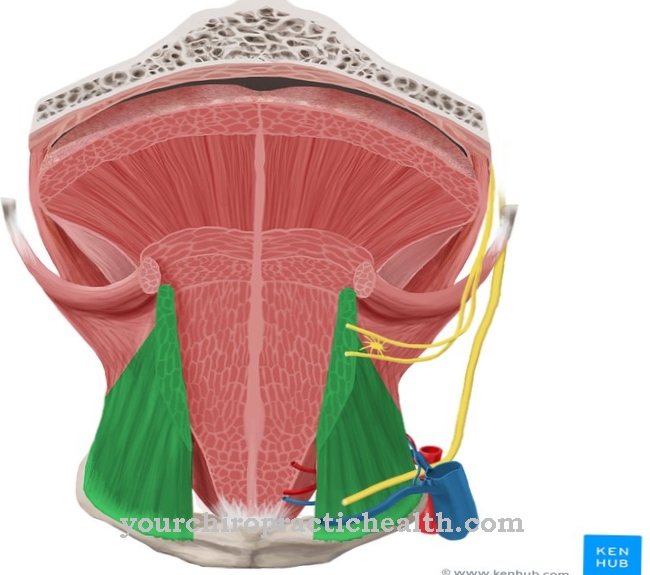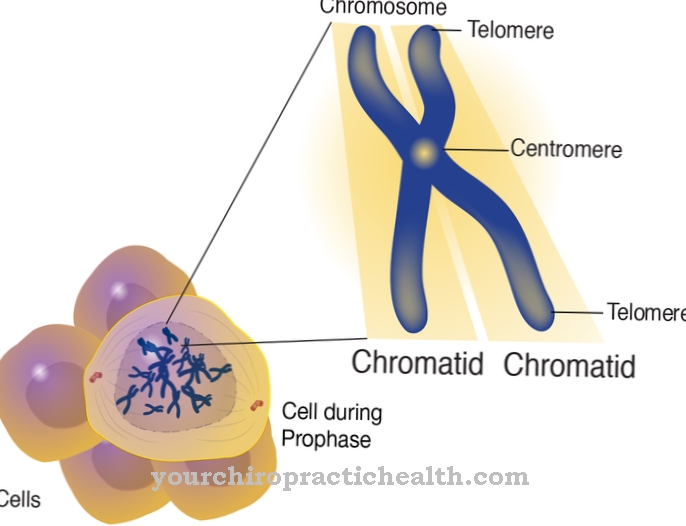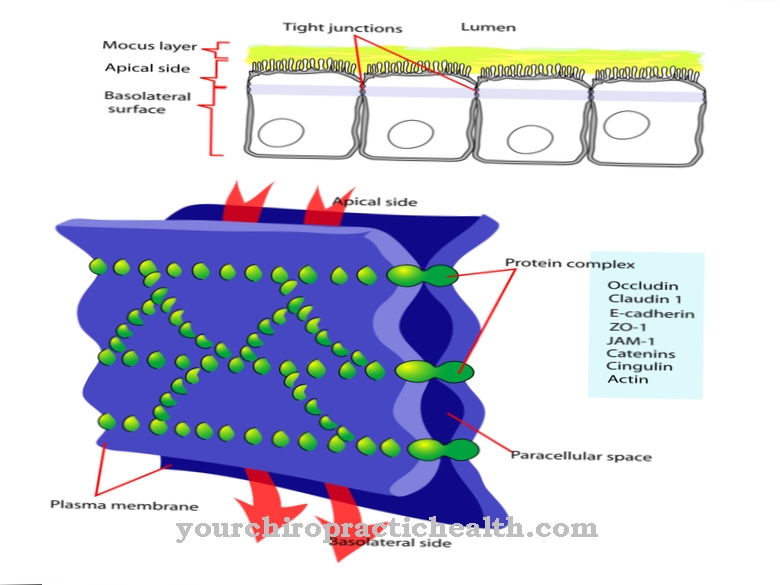As Endothelium is the term used for the innermost cell layer of blood and lymph vessels. It is a unicellular layer of endothelial cells. The endothelium regulates the exchange of substances between blood and body tissue, it produces important messenger substances and influences the blood's ability to clot and the formation of new blood vessels (angiogenesis).
What is the endothelium?
The endothelium consists of a unicellular layer of endothelial cells that form a so-called squamous epithelium and line all the blood and lymph vessels on the inside. The endothelium performs a wide range of tasks and has a decisive influence on the exchange of substances between blood and body tissue.
This function is particularly important in the capillaries, in which the oxygen-rich arterial blood of the large body circulation releases the oxygen and absorbs "used" substances and transports it away as oxygen-poor venous blood. The surface area covered by the endothelium in the vessels is about 7,000 square meters, and the number of endothelial cells in humans reaches an impressive number of more than 10 trillion.
In the vessels that supply the brain, the endothelium plays a special role in maintaining the blood-brain barrier. In the brain region, the endothelium is practically impermeable to substances, with the exception of selective groups of substances that use strictly specific transport mechanisms to cross the endothelium and thus overcome the blood-brain barrier.
Anatomy & structure
The endothelium, which lines the inside of the blood and lymph vessels, consists of a single-cell layer of endothelial cells that are connected to one another in the form of a squamous epithelium. Below the endothelium is the basal lamina as part of the basement membrane, which creates the connection to the underlying tissue and is traversed by fibrils arranged in a network.
The endothelial cells are formed through the differentiation of partially potent angioblasts, which in turn develop from the multipotent stem cells of the blood and vascular system, the hemangioblasts. Hemangioblasts are available as stem cells in the blood for life. Depending on the functional areas in the body, the endothelial cells are connected to one another to different degrees and thus form material barriers with different effects. In principle, the connection between the endothelial cells consists of "tight junctions" in the form of thin strands of transmembrane proteins such as B. Occludin.
Depending on the ability to exchange substances, a distinction is made between continuous, discontinuous and fenestrated endothelium. While the continuous endothelium only allows highly selective exchange of substances via specialized transport vehicles, there are small gaps in the discontinuous endothelium that enable the exchange of substances with certain substances even without a transport vehicle. The fenestrated endothelium is particularly permeable to hydrophilic substances and water.
Function & tasks
The endothelium fulfills a number of important physiological tasks in addition to its function as the lining of the inner wall of the blood and lymph vessels. One of the most important tasks is to regulate the exchange of substances between blood and the surrounding body tissue. This task is particularly critical in the area of the brain, where the continuous endothelium maintains the blood-brain barrier to protect the nerve cells and allows only selective substance transport via specific transport vehicles.
Another task is to regulate blood pressure using certain messenger substances. First and foremost, nitric oxide (NO) and prostacyclin should be mentioned. Both substances are synthesized by the endothelium and lead to relaxation of the smooth muscles in the vessel walls, so that the increase in lumen in the veins leads to a reduction in blood pressure. The endothelium also synthesizes endothelin, which causes the smooth muscles in the vascular wall to contract and thus increases blood pressure.
The endothelium also has an influence on the coagulation processes. The coagulation process can be activated or inhibited by substances that the endothelium synthesizes. If necessary, the endothelium produces the tissue plasminogen activator (tPA), which modulates the thrombus dissolution through the formation of plasminogen. The endothelium also takes on important tasks in inflammatory processes. Local activation of the endothelium attracts various types of leukocytes such as B. neutrophils, monocytes, macrophages and T lymphocytes.
The attracted leukocytes can be guided from the blood vessel through the vessel wall into the surrounding tissue at the appropriate location via a specific transport mechanism in order to fight an infection there recognized by the immune system. When the body needs new blood vessels (angiogenesis), the endothelium also takes on an important function here. The endothelium releases substances that cause new blood vessels to sprout.
Diseases
The differentiated and complex physiological tasks performed by the endothelium show that malfunctions or dysfunctions of the endothelium can have serious effects. Inflammation, injuries or certain toxins can lead to dysfunction of the endothelium, which leads to secondary damage such as arteriosclerosis, disruption of blood clotting and misdirection of the immune system.
Endothelial dysfunction can e.g. B. influence the blood pressure regulation mechanism and the permeability of the vessel walls for certain substances in such a way that pathological effects occur. Disturbances in the endothelial regulatory mechanisms are discussed primarily as the cause of arteriosclerosis. Other authors postulate the hypothesis that only pathological changes in the vessels lead to dysfunction of the endothelium, i.e. that the cause-effect is exactly the opposite. A disturbance in nitric oxide synthesis, known as eNOS (endothelial NO synthase), has a particularly serious effect.
In addition to its vasodilating properties, the messenger substance nitrogen monoxide has an influence on a number of other vascular protective mechanisms that are of great importance for maintaining endothelial functions. A chronic decrease in NO production can be blamed for a number of vascular diseases. An early marker of endothelial dysfunction is low levels of albumin in the urine (microalbuminuria). However, the microalbuminuria can also indicate kidney damage, so that a differential diagnosis must be made.



























